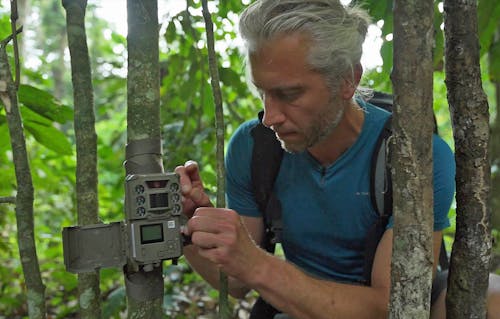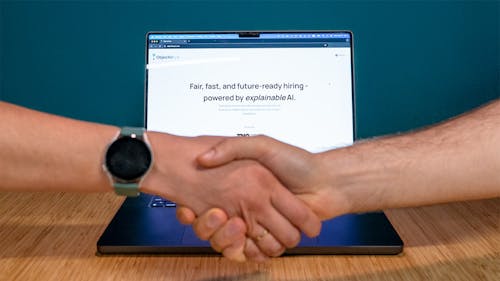AI challenge
For the Dutch company Pon, we created an innovative proof-of-concept using machine learning and voice technology to validate strategic choices.
How can AI and voice applications ensure that work and hour reports from technicians are delivered earlier, are more accurate and take less time? A great innovative challenge! Together with Pon, we have gained insights into possible solutions and validated them.
Pon and Q42
Pon is one of the largest companies in the Netherlands. From cars and commercial vehicles to smart mobility solutions and from (electric) bicycles, heavy machines and energy solutions to maritime and technical services: Pon is active with many companies in a variety of industries. We have already done a lot of innovative work together with Pon. From smart connected bicycles and multimodal transport to VR experiences. We share a preference for short lines of communication and an action-oriented business strategy with a view to the future.
The AI challenge
So when the Pon innovation lab approached us for a challenge to accelerate innovation in the field of artificial intelligence, we saw plenty of opportunities to create truly useful AI applications. We expect that this technology will have major consequences for Pon. The objective of the challenge was to develop a strong proof-of-concept and a roadmap based on a relevant business case with which Pon can take action.
More value from data
By starting with company-wide interviews, from technicians to executives, it became clear that Pon had already started collecting data in full swing. The hypothesis was that more value could be extracted from the data if the underlying maintenance reports are more accurate. We have therefore focused on improving these reports.
Sub-optimal reports
Pon technicians create reports for various stakeholders and goals. For customers, certification, warranty. This results in reports that are not always the same. For yachts, for example, owners expect a gold-edged report with photos, other customers have different wishes. The language of instruction also differs. And there is a lot of overlap on the one hand and few links between the interfaces where the reports have to be entered on the other. Technicians must therefore enter the same information several times. In addition, some read-out values must be noted immediately, but descriptions of parts can easily be entered at a different time. Some technicians even keep the key data on paper for later entry into all kinds of systems. All this leads to procrastination and a general reduction in the quality of the reports.
Proof-of-concept
By combining AI with voice, we have made this workflow easier. Especially in the professional context of Pon, where a lot of work is done with hands, voice is a very effective interface for converting speech into text. Our proof-of-concept would have the advantage that it saves technicians time, reduces errors in reports, makes the work process more pleasant and yields much more valuable data.
A proprietary speech recognition model
For the proof-of-concept, the use of standard consumer voice infrastructure (Google, Amazon, etc.) turned out to be inadequate. Understanding a professional in the field correctly is more difficult than the setting of a living room, for example. A technician uses terminology that is not available in normal speech recognition, the use of language is short and he or she often works in an environment with significant background noise. To solve this shortcoming of standard Automated Speech Recognition (ASR), we have deployed a custom ASR. In our own speech recognition model we can use subject and context specific data, configurations and training sets. This greatly improves performance for the context of Pon.
Validation
Although the prototype worked, there was one shortcoming. For the context of Pon, there are too few voice data sets to train a usable Dutch ASR model. The custom model should be fed with many more words in order to properly recognize the language use of technicians. By creating the proof-of-concept, we have validated that it is too early for Pon to continue with this. In this way, we have given Pon a strategic direction for the use of AI in combination with voice. And what's more: we saved Pon the unnecessary development of a fully developed solution.





